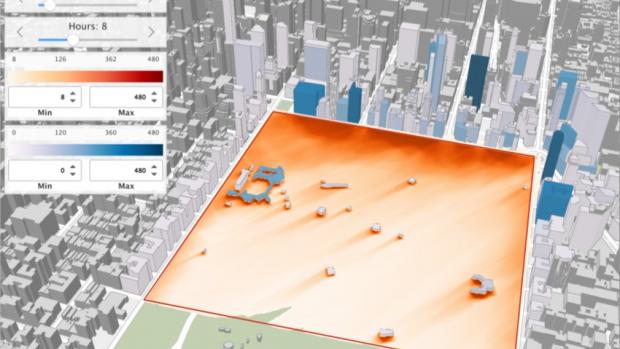Smart Urban Design Means Knowing Where the Shadows Fall

As the world urbanizes and new buildings elbow their way into already-crowded cities, structural shadows are increasingly affecting quality of life. While shade thrown by large man-made objects provides respite during torpid summers, it can make winters darker and public spaces less inviting, and it can make it harder to keep green spaces green, as vegetation in city parks and gardens is less verdant when there’s less sun.
Smart urban design should include extensive assessment of the shadows cast by proposed structures, including a review of the accumulation of shadows over time across different periods. Unfortunately, methods for doing this come up short.
A cross-functional team, comprising Fabio Miranda, a doctoral student in computer science and engineering at the NYU Tandon School of Engineering; Harish Doraiswamy and Claudio Silva, research assistant professor and professor, respectively, at NYU Tandon; Marcos Lage, associate professor at the Institute of Computing at the Fluminense Federal University, Brazil; and Luc Wilson and Mondrian Hsieh of the architectural design firm Kohn Pedersen Fox are developing a novel solution.
Instead of explicitly tracking the movement of the sun, which is how shadow accumulation is usually measured, the researchers are tracking the movement of the shadows. Using the key insight that shadows move linearly within a short time range, they designed an efficient algorithm that performs an order of magnitude faster than those used in existing approaches. “This also allows users to interactively compute and explore shadows over different time ranges and allows them to quickly test multiple scenarios,” said Doraiswamy.
The team also created an interactive visual analysis system called Shadow Profiler that allows city planners and architects to test the impact of shadows over time for different scenarios, such as replacing existing buildings with proposed ones to evaluate the effect of new development.




